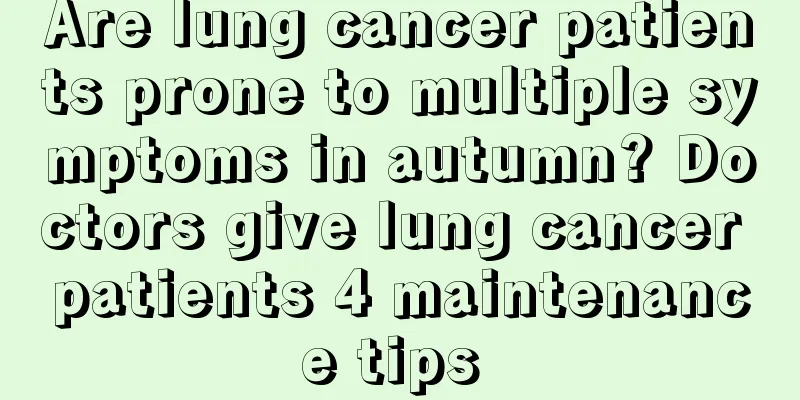A brief discussion on the late stage symptoms of gallbladder cancer

|
According to the survey, the incidence and mortality of gallbladder cancer ranks first among malignant tumors of the gallbladder. Others include giant cell adenocarcinoma, primary malignant melanoma, carcinoid, sarcoma, etc. The latter are rare and were considered to be relatively rare malignant tumors in the past. Regardless of the treatment method used, gallbladder cancer still progresses rapidly and eventually leads to death. The number of female patients is 2 to 4 times higher than that of male patients. It is generally more common in people aged 50 to 70. Early diagnosis and appropriate treatment methods are of great significance to the prognosis of this disease. 1. Symptoms of advanced gallbladder cancer 1. Pain in the right upper abdomen Most cases are persistent pain in the right upper abdomen, which may be aggravated paroxysmically and radiate to the right shoulder and waist and back. This symptom accounts for 84%. Since gallbladder cancer often coexists with gallbladder stones and inflammation, the pain is similar to that of calculous cholecystitis, starting with discomfort in the right upper abdomen, followed by persistent dull pain or dull pain, sometimes accompanied by paroxysmal severe pain and radiating to the right shoulder. 2. Digestive tract symptoms The vast majority (90%) experience indigestion, aversion to greasy food, belching, and decreased appetite, which is due to the gallbladder's inability to digest fat. Nausea and vomiting are also quite common, and there is often a loss of appetite. 3. Jaundice Due to the spread of cancer, about 1/3 to 1/2 of patients develop jaundice. Jaundice is the first symptom in a few patients, and most jaundice occurs after pain. Jaundice is persistent and progressively worsens. A few patients show intermittent jaundice. Jaundice often appears in the late stage of the disease, accounting for 36.5%, mostly due to cancer tissue invading the bile duct and causing malignant obstruction. It is also accompanied by weight loss, fatigue, and even cachexia, yellowing of the skin and mucous membranes, and difficult-to-treat skin itching. 4. Chills and fever It often occurs in the late stage of cancer. 25.9% of patients develop fever, and the high fever may persist. 5. Lump in the right upper abdomen When the disease develops to the late stage, a mass appears in the right upper abdomen or upper abdomen, accounting for 54.5%. One is that the tumor grows rapidly, blocking the bile duct and causing the gallbladder to swell; the other is that it invades the duodenum and causes obstruction symptoms; in addition, if it invades the liver, stomach, pancreas, etc., masses may also appear in the corresponding parts. The above are the advanced symptoms of gallbladder cancer. Expert Tips: If you have symptoms of disease, do not delay diagnosis and go to a regular hospital for treatment in time to avoid delaying the disease and causing serious consequences. If you have other questions, please consult our online experts or call for consultation. I wish you health and happiness! Gallbladder cancer http://www..com.cn/zhongliu/dna/ |
<<: What issues should liver cancer patients pay attention to?
>>: What are the healthy diets for gallbladder cancer
Recommend
How to exercise when you have cervical spondylosis
With the gradual improvement of living standards,...
What to eat to improve constipation
Constipation is a problem that most people will f...
Effects of ultra-long waves on the human body
As a high-tech product, the effect of ultra-long ...
How to eat Rana oil correctly
Some friends may not know much about Rana affine ...
What are the methods to remove blackheads and shrink pores?
Everyone pays special attention to the skin on th...
What are the effective treatments for liver cancer? An inventory of the most effective treatments for liver cancer
Liver cancer, known as the "king of cancers&...
The efficacy of fried Citrus aurantium with bran
The effects of the drug "Stir-fried Citrus a...
How to cure small cell lung cancer
How to cure small cell lung cancer? Western medic...
How to use Platycladus orientalis leaves to treat seborrheic alopecia
The dried branches and leaves of Platycladus orie...
What to do if you have no appetite after pancreatic cancer surgery
The current treatments for pancreatic cancer main...
The earlier you smoke, the more likely you are to get bladder cancer. There are 4 good ways to prevent bladder cancer
Bladder cancer is a malignant tumor that occurs o...
What are the symptoms of late stage nasopharyngeal carcinoma
What are the symptoms of advanced nasopharyngeal ...
Which department should I go to for breast B-ultrasound
Breasts are women's secondary sexual characte...
What is the difference between hair spray and hair wax
If you want to shape your hair or make it look br...
Are black beans effective for hair growth?
Black beans are a common ingredient, and they als...









